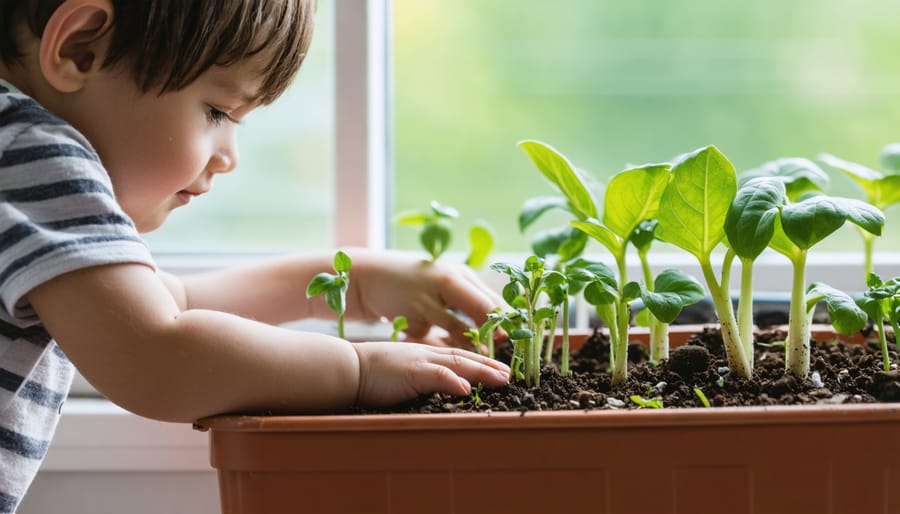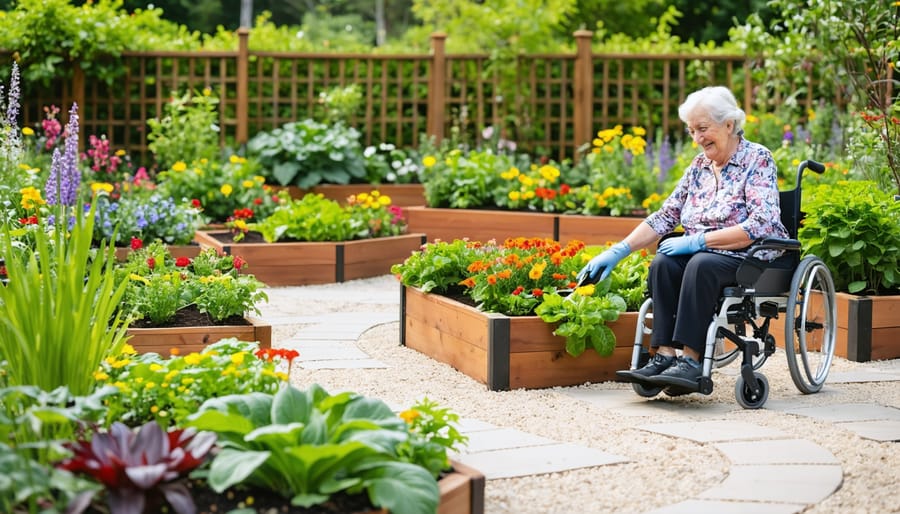Transform your windowsill, balcony, or rooftop into a thriving urban oasis that nourishes both body and soul. Urban gardening has emerged as a powerful solution for city dwellers seeking fresh, organic produce and a deeper connection to nature without leaving their neighborhoods. From reducing grocery bills and improving air quality to creating vibrant community spaces, city gardens are revolutionizing how we think about food production and sustainable living in metropolitan areas.
Beyond the obvious benefit of harvesting fresh herbs and vegetables steps from your kitchen, urban gardening offers remarkable mental health advantages. Tending to plants reduces stress, improves mood, and provides a meaningful escape from the digital world. Studies show that just 30 minutes of gardening can significantly lower cortisol levels – the body’s primary stress hormone.
Whether you’re working with a tiny apartment balcony or a shared community plot, urban gardening adapts to your available space and lifestyle. This sustainable practice not only helps combat urban heat islands and supports local biodiversity but also empowers individuals to take control of their food security while building stronger, more resilient communities.
Physical Health Benefits That Bloom in Your Urban Garden
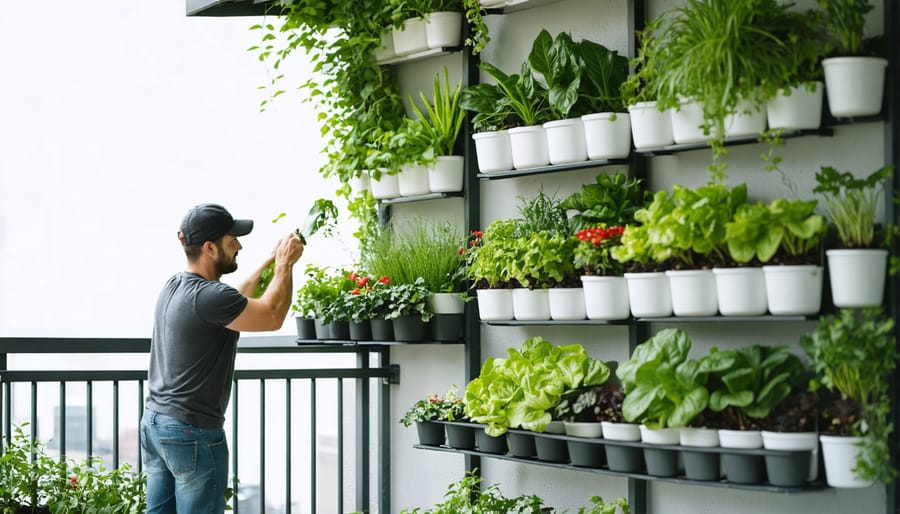
Natural Exercise That Doesn’t Feel Like Work
Did you know that urban gardening can give you a full-body workout without the monotony of a gym routine? Every time you tend to your garden, you’re engaging in natural, functional movements that exercise multiple muscle groups simultaneously.
Digging and turning soil works your arms, shoulders, and back while strengthening your core. Weeding and planting activate your leg muscles as you squat and kneel, improving flexibility and balance. Even the simple act of watering plants can be a light cardio exercise as you move between different areas of your garden.
What makes gardening particularly effective as exercise is its varied nature. Unlike repetitive gym workouts, gardening tasks change with the seasons and your plants’ needs. One day you might be lifting and carrying containers, the next you could be reaching and stretching to prune higher branches. These diverse movements help build strength, endurance, and flexibility naturally.
The best part? Most people get so absorbed in their gardening tasks that they don’t even realize they’re exercising. The satisfaction of nurturing plants and seeing them grow makes the physical effort feel more like a rewarding hobby than a workout. Studies suggest that just 30 minutes of gardening can burn between 150-300 calories, comparable to other moderate-intensity exercises.
For older adults or those with limited mobility, container gardening and raised beds offer similar benefits while being more accessible and gentler on the body.
Fresh, Nutrient-Rich Food at Your Doorstep
There’s nothing quite like stepping into your garden and picking fresh, sun-ripened tomatoes or crisp lettuce leaves for your dinner salad. When you grow your own food in an urban garden, you’re not just getting produce – you’re getting the freshest, most nutrient-dense vegetables possible right at your doorstep.
Homegrown vegetables and herbs contain significantly higher levels of vitamins and minerals compared to store-bought alternatives, primarily because you can harvest them at peak ripeness. Store-bought produce often travels long distances and may sit on shelves for days, losing nutritional value along the way.
Growing your own food also means you have complete control over what goes into your soil and onto your plants. You can choose organic growing methods, avoiding synthetic pesticides and fertilizers. This not only results in healthier food but also gives you peace of mind knowing exactly how your produce was grown.
The variety you can grow is another exciting benefit. You’re not limited to what’s available at the supermarket – you can experiment with heritage varieties, unusual herbs, and exotic vegetables that might be hard to find elsewhere. Imagine picking purple carrots, striped tomatoes, or rare herbs that would cost a premium at specialty stores.
Best of all, having a productive garden means always having fresh ingredients on hand for cooking, reducing food waste and grocery bills while ensuring your meals are packed with flavor and nutrients.
Mental Wellness Through Urban Greenery
Stress Relief in Your Green Sanctuary
In today’s fast-paced world, finding moments of peace can feel like searching for a needle in a haystack. Yet, urban gardening offers a natural sanctuary right at home, providing remarkable healing effects on mental health and stress reduction. The simple act of tending to plants can lower cortisol levels, our body’s primary stress hormone, while increasing feelings of calm and contentment.
Imagine starting your day by checking on your flourishing herbs or ending a challenging workday by watering your tomato plants. These mindful moments create a natural pause button, allowing you to step away from daily pressures and connect with something living and growing. The rhythmic nature of gardening tasks, from gentle watering to careful pruning, promotes a meditative state that helps clear the mind.
The sensory experience of gardening adds another layer of stress relief. The earthy smell of fresh soil, the gentle rustle of leaves, and the satisfaction of watching seeds transform into flourishing plants engage multiple senses, grounding you in the present moment. Even the physical activity involved in gardening releases endorphins, nature’s mood boosters, while the presence of beneficial soil microbes has been shown to elevate serotonin levels.
Your urban garden becomes more than just a collection of plants – it’s your personal retreat, a living, breathing space where stress melts away and peace takes root.
Building Community Through Shared Gardens
Shared gardens are transforming urban spaces into vibrant hubs of social connection and community engagement. When neighbors come together to cultivate a garden, they create more than just vegetables and flowers – they nurture lasting friendships and a stronger sense of community belonging.
These collaborative green spaces provide natural meeting points where people from diverse backgrounds can connect over a shared interest in gardening. Whether you’re a seasoned gardener or just starting, community gardens welcome everyone, creating opportunities for knowledge exchange and mutual support. Experienced gardeners often become mentors, sharing their wisdom about soil preparation, pest management, and seasonal planting with newcomers.
Many community gardens organize regular events, from harvest celebrations to gardening workshops, fostering a festive atmosphere that strengthens neighborhood bonds. These gatherings often evolve into potluck meals featuring home-grown produce, creating cherished traditions that bring families together.
Children particularly benefit from these shared spaces, learning valuable lessons about cooperation, responsibility, and where their food comes from. Working alongside adults and peers in the garden helps develop their social skills while connecting them to nature and healthy eating habits.
The impact extends beyond the garden fence – community gardens often spark wider neighborhood improvements, inspiring beautification projects and creating a greater sense of pride in the local area. They become catalysts for positive change, encouraging residents to take active roles in community development and environmental stewardship.
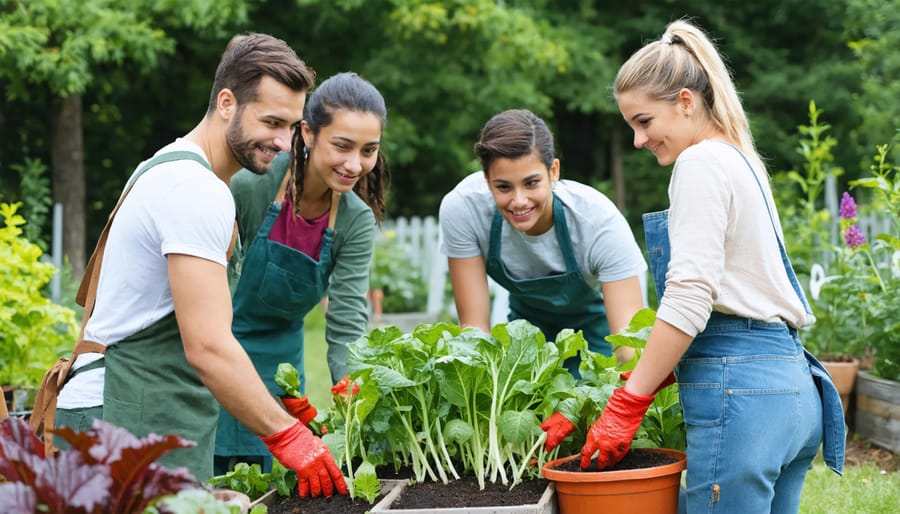
Environmental Impact of Your Urban Garden
Creating Urban Wildlife Havens
Urban gardens do more than just beautify our spaces – they create vital sanctuaries for local wildlife. By transforming balconies, patios, and small yards into green oases, we provide essential habitats for birds, butterflies, bees, and other beneficial creatures that struggle to find homes in concrete jungles.
Creating a wildlife-friendly garden starts with choosing the right plants. Native species are particularly valuable as they’ve evolved alongside local wildlife, providing familiar food sources and shelter. Consider planting wildflowers like echinacea and black-eyed susans, which attract pollinators, or berry-producing shrubs that feed birds throughout the seasons.
Adding water features, even something as simple as a shallow bird bath, can dramatically increase your garden’s appeal to wildlife. Layer your plantings with varying heights – ground covers, mid-height perennials, and taller shrubs – to create diverse habitats that support different species. Leave some areas slightly wild, with fallen leaves and twigs, to provide natural shelter for beneficial insects.
Many urban gardeners report the joy of watching their spaces transform into bustling ecosystems. From morning birds gathering nesting materials to evening visits from moths and bats, these mini-sanctuaries help maintain biodiversity in our cities. Best of all, creating wildlife havens doesn’t require vast spaces – even a window box filled with pollinator-friendly flowers can make a difference in supporting urban wildlife.
Reducing Your Carbon Footprint
Growing your own food in an urban garden is one of the most effective ways to reduce your carbon footprint and contribute to environmental sustainability. When you cultivate vegetables and herbs at home, you significantly decrease the distance your food travels from farm to table, reducing transportation emissions and packaging waste.
Consider this: the average meal in North America travels about 1,500 miles before reaching your plate. By growing food in your backyard or balcony, you’re essentially bringing that distance down to zero. Urban gardening also helps combat the “heat island effect” in cities, as plants naturally cool the surrounding air and absorb carbon dioxide.
Your garden can become a personal carbon sink, with each plant doing its part to capture CO2 from the atmosphere. Even a small 4×8 foot vegetable garden can offset around 60 pounds of carbon dioxide annually – that’s equivalent to driving about 70 miles in an average car!
Beyond carbon reduction, urban gardens promote biodiversity by providing habitats for beneficial insects and pollinators. When you practice organic gardening methods, you’re also avoiding the environmental impact of synthetic pesticides and fertilizers. Using compost from kitchen scraps further reduces waste while creating nutrient-rich soil for your plants.
By joining the urban gardening movement, you’re not just growing food – you’re participating in a sustainable solution for our planet’s future.
Getting Started: Urban Garden Success Tips
Space-Smart Solutions
Living in an urban environment doesn’t mean you have to compromise on your gardening dreams. With creative thinking and smart planning, you can maximize small garden spaces in ways you might not have imagined.
Vertical gardening is your best friend in tight spaces. Install wall-mounted planters or create a living wall using pocket planters to grow herbs, leafy greens, and trailing plants. Stackable containers and tiered planters help you make the most of limited floor space while adding visual interest to your garden.
Don’t overlook often-forgotten spaces like windowsills, balcony railings, and even hanging space above your head. Windowsill herb gardens bring fresh flavors right to your kitchen, while hanging baskets can transform an ordinary balcony into a blooming paradise. Consider using tension rods between walls to hang lightweight planters or repurpose shoe organizers as vertical growing spaces.
Multi-functional furniture pieces can double as growing spaces too. Think hollow benches that house container gardens or coffee tables with built-in herb planters. Even the smallest balcony can accommodate a folding table that serves as both a workspace and a plant stand.
Remember to choose plants that thrive in your specific conditions. Compact varieties and dwarf plants are perfect for small spaces, giving you all the joy of gardening without overwhelming your area. With these space-smart solutions, every corner becomes an opportunity to grow something beautiful.
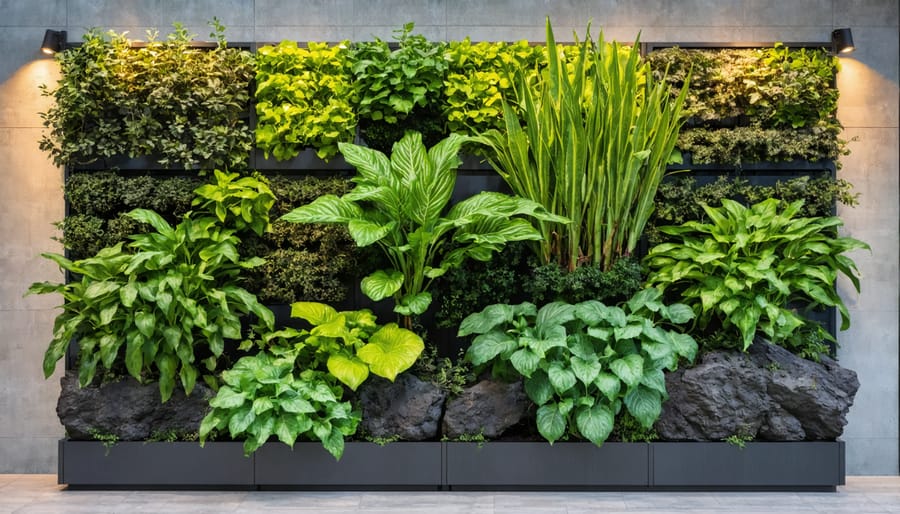
Essential Tools and Resources
To start your urban garden, you’ll need a few essential tools and resources that will set you up for success. Begin with high-quality containers or raised beds suitable for your space – these can range from traditional pots to creative solutions like repurposed wooden crates or vertical gardening systems.
Essential gardening tools include a hand trowel for planting and transplanting, pruning shears for maintenance, and a watering can or hose with an adjustable nozzle. Don’t forget a pair of durable gardening gloves to protect your hands while working with soil and plants.
Quality potting soil is crucial for container gardening. Look for organic options specifically formulated for vegetables and herbs. You’ll also need organic fertilizer to ensure your plants receive proper nutrition throughout the growing season.
Consider investing in basic plant supports like trellises or stakes for climbing plants such as tomatoes or pole beans. A soil moisture meter can be helpful for beginners learning proper watering techniques, while a small storage solution keeps your tools organized and easily accessible.
For those with limited sunlight, grow lights can extend your growing possibilities. Finally, remember to gather some basic reference materials – whether digital or print – about the specific plants you’re growing and their care requirements. Starting with these fundamentals will help ensure your urban garden thrives from day one.
Urban gardening is more than just a hobby – it’s a transformative journey that brings countless rewards to your life and community. As we’ve explored throughout this article, the benefits range from improved mental health and reduced stress to environmental conservation and enhanced food security. Whether you’re tending to a few herbs on your windowsill or managing a flourishing balcony garden, every small step contributes to a greener, healthier future.
The beauty of urban gardening lies in its accessibility – you don’t need acres of land or years of experience to get started. With just a few containers, quality soil, and some basic knowledge, you can begin your gardening adventure today. The satisfaction of harvesting your first homegrown tomato or watching pollinators visit your flowering plants is truly unmatched.
Remember, urban gardening is also about building connections – with nature, your food, and your community. It’s an opportunity to share knowledge, exchange produce, and inspire others to join the movement toward sustainable living. Every urban garden, no matter how small, plays a vital role in creating greener cities and more resilient communities.
So why wait? Start your urban gardening journey today. Whether you begin with a single potted herb or dive into a full balcony transformation, you’ll be amazed at how quickly the benefits begin to flourish in your life. Join the growing community of urban gardeners and be part of the solution for a more sustainable future.


